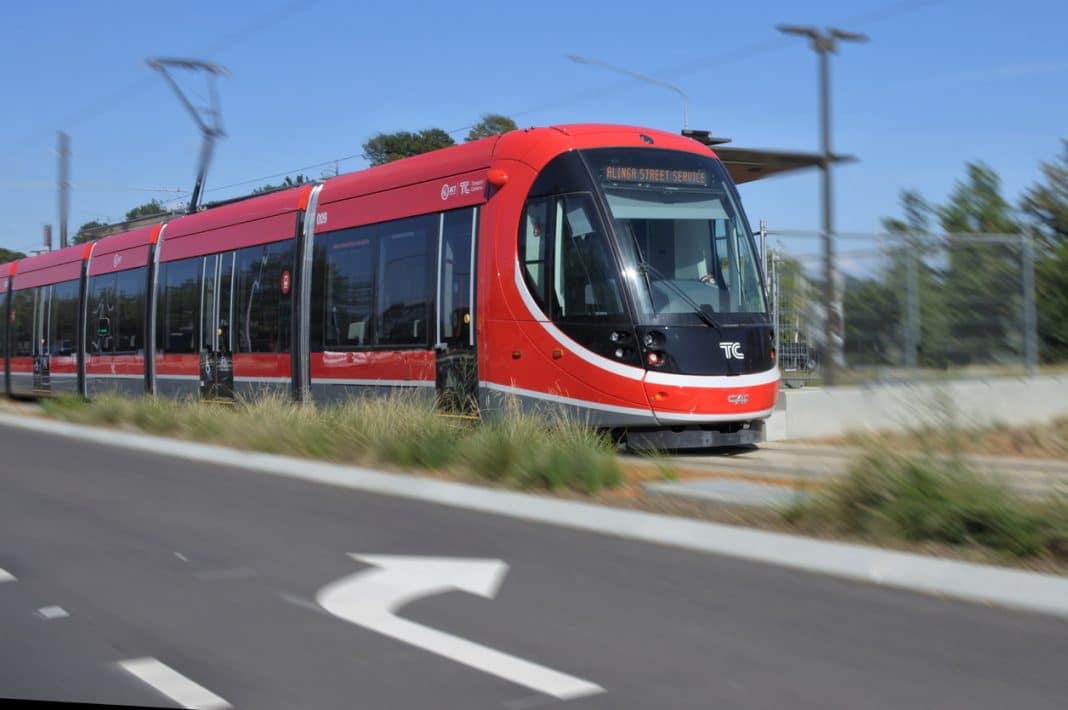The ACT Auditor-General has reviewed the ACT Government’s business case and economic analysis for light rail stage 2A from Civic to Commonwealth Park, and told the government to do their homework again.
The ACT Government’s Business Case for light rail 2A, including economic analysis, was made publicly available in September 2019. Auditor-General Michael Harris submitted his report this week.
Capital costs, the Auditor-General believes, will be much higher than the government estimated; many of the benefits claimed depend on other projects; and the ACT Government had not yet developed a standard practice Benefits Realisation plan.
As a result, the Auditor-General called on the ACT Government to review and update the economic analysis for Light Rail Stage 2A; to explicitly identify development costs and benefits associated with the project; and to develop the Benefits Realisation Plan.
The ACT Government received a copy of the detailed report, and would consider its findings closely, a spokesperson said.
Project cost estimates
In the Business Case, the ACT Government stated that capital costs for stage 2A would amount to $162 million. However, the Auditor-General reckoned the capital cost would be higher than this estimate, because the Business Case did not include costs associated with retrofitting the light rail vehicle fleet with wire-free technology (approximately 17 per cent of the estimated capital cost).
“At the time of the preparation of the Stage 2a Business Case, there was a very strong likelihood that wire-free technology would be required for any extensions towards and through the Parliamentary Zone but this cost, and other costs associated with urban design finishes, were not explicitly included in the capital cost estimate for Light Rail Stage 2a,” the report stated.
The Business Case also estimated that the development costs of Acton Waterfront would be $23 million. The Auditor-General said the Business Case did not identify a nominal capital cost estimate for this figure, and provided inadequate information about the development costs, the methodology for quantification, and the assumptions underpinning the estimate.
The Auditor-General recommended the government update the expected costs associated with Light Rail Stage 2a, including costs associated with the accelerated development of the Acton Waterfront, in revised, publicly available documents.
Project benefit estimates
The ACT Government claimed that light rail would result in $150 million in benefits (compared to $268 million of estimated costs). But the Auditor-General’s report stated that many of the benefits identified depended on the project accelerating the Acton Waterfront development – but the Business Case and Economic Appraisal Report did not provide information or evidence on how Light Rail Stage 2A would accelerate the development.
“Should the Acton Waterfront not be developed as fast as is hoped, then the timing and quantification of the expected benefits of Light Rail Stage 2A are at risk,” the report cautioned.
The economic appraisal was developed in the context of a series of transformational projects and revitalisation activities: raising London Circuit to be at-grade with Commonwealth Avenue; and an NCA proposal to reconfigure Kings and Commonwealth Avenues as grand boulevards and develop Section 100 at City Hill. Implementation of light rail depended on raising London Circuit, and would be influenced by the NCA’s plans for Commonwealth Avenue Bridge, the Auditor-General also noted.
“Any failure to implement these projects on a timely basis will have a negative impact on the expected benefits of Light Rail Stage 2A,” the report warned.
Benefits management
In their Business Case, the ACT Government committed to develop a Benefits Realisation Plan. The Auditor-General said this has not been done yet, although the 2016 Australian Transport Assessment and Planning Guidelines said this should have been done at the earliest possible stages of the project ‘to ensure that a mindset of accountability and structured approach towards achieving set benefits is embedded from the early stages of planning’.
The Auditor-General’s report stated that benefits management activities should include the development and implementation of a Benefits Realisation Plan; the 2016 Guidelines envisaged that benefits planning occur when considering options for the transport initiative and developing the business case.
Government response
An ACT Government spokesperson noted the Report focused on Stage 2A of light rail. “Whilst the Stage 2A extension provides some benefits, the ACT Government’s intention is to maximise the benefits for the City in extending the line from Gungahlin to Woden.
“Stage 2 of light rail will be Canberra’s biggest-ever infrastructure project, delivering major long-term benefits. We recognise the importance of delivering this project in a way that realises economic, environmental and social benefits for the Canberra community.”
For more news:



